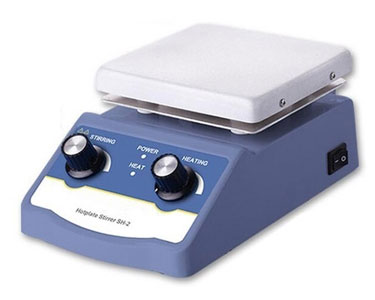How to Choose a Magnetic Stirrer?
Magnetic stirrers have become a wide variety of low-cost laboratory routine equipment, which enables us to have the ability to choose the magnetic stirrer that we need. Faced with many types of magnetic stirrers with different prices on the market, how should we choose?
 For applications that only require stirring at room temperature, choose a simple magnetic stirrer with only stirring function.
For applications that only require stirring at room temperature, choose a simple magnetic stirrer with only stirring function.- For applications that require stirring and heating at the same time, and the temperature requirements are not very strict, a standard heating magnetic stirrer should be selected.
- If you need to display the temperature in real time during the working process, choose a digital temperature heating magnetic stirrer.
- If you need to set the working time, and stop working when the time is up, you can choose a timed magnetic stirrer.
- If the requirements for heating temperature control are strict, you have to choose a water-bath heat-collecting magnetic stirrer. The water-bath heat-collecting magnetic stirrer is equivalent to a standard heating magnetic stirrer. A water bath is integrated on the chassis. We all know that water bath heating has the characteristics of uniform heat transfer, precise temperature control, and safe heating. Therefore, the water bath collector magnetic stirrer is especially suitable for applications where it is difficult to heat from the heating chassis, such as strict temperature control requirements and uneven bottom of the container (such as flasks).
- If you need to accurately display the real-time speed during the work, choose a digital-display speed heated magnetic stirrer, but with this speed display function will greatly increase the price of the instrument, it is recommended for demanding research-level occasions.
- If the volume of liquid to be stirred is large, a large-capacity magnetic stirrer should be selected. The stirring capacity of a conventional magnetic stirrer is generally less than 2000mL.
- If conventional electric stirring is required at the same time as magnetic stirring, an electric magnetic compound stirrer can be selected.
- If there are complex requirements for stirring characteristics, such as rotating for a while and stopping for a while, forward rotation for a while, reverse rotation for a while, heating for a certain period of time, heat preservation for a certain period of time, cooling for a certain period of time, low speed for a certain period of time for a certain period of time High speed, etc., you need to customize the intelligent program-controlled magnetic stirrer. However, the integration of so many complex functions will make the price of the instrument skyrocket, and it is only recommended for extremely demanding research-level occasions.
In addition, the magnetic stirring bar is a special accessory for the magnetic stirrer. The commonly used shapes are divided into three types: A, B, and C. Type A is an olive type, which is specially used for stirring in round-bottom bottles. Types B and C are basically similar in use. The dimensions of these three stirrers are large and small, so you should also choose according to the size of the bottom of the volumetric flask when purchasing.
Some small rotors can stir a few milliliters of solution in a small flat-bottomed bottle, and a large rotor can stir a larger volume of solution. When the viscosity of the solution is large, a larger rotor is required, and sometimes the viscosity is too large and cannot be stirred evenly with magnetic stirring. Consider using mechanical agitation. Some rotors are shaped like lemons and can be used in round-bottomed flasks, while the straight ones can be used in flat-bottomed containers.

